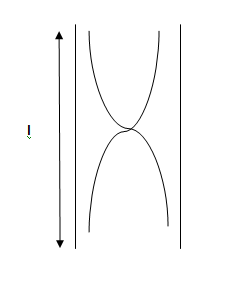You are blowing into a hollow tube whose opposite end is covered by your hand. You hear the sound of the resulting standing wave as you blow into this tube. What happens to the frequency of the sound coming from the tube when you remove your hand?
You are blowing into a hollow tube whose opposite end is covered by your hand. You hear the sound of the resulting standing wave as you blow into this tube. What happens to the frequency of the sound coming from the tube when you remove your hand?
Decrease
Increase
Unchanged
When a hollow tube is open at the both ends thats called a open organ pipe.
The waves are reflected from these ends without change of type.
However, the particles continue to move in the same direction even after the reflection of the wave. The particles have the maximum displacement at the open ends. Hence, antinodes(that position of the maximum displacement in a standing wave system) are formed at open ends.
First mode of the vibration: In the simplest mode of vibration, there is one node in the middle and two antinodes, at the end of the pipe. We know, distance between two antinodes, or two nodes is
Fundamental frequency of vibration,

v = velocity of the wave
If opposite end of tube is covered, then two cube is called closed pipe.
In, the closed pipe, the wave is reflected, from the close end of the direction of the motion of the particles changes, the displacement is zero at the closed end.
Step by step
Solved in 2 steps with 2 images
